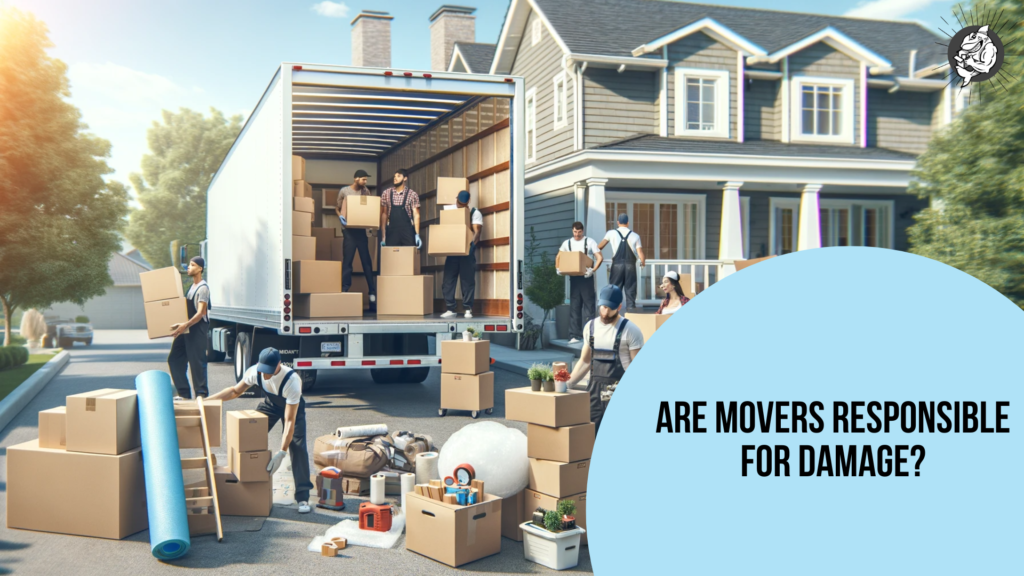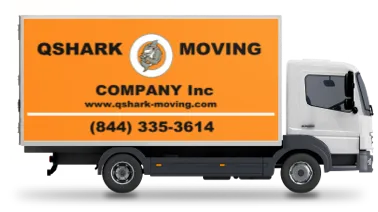Are Movers Responsible for Damage?

In the moving world, a pressing question looms: Are movers responsible for damage? The answer isn’t just yes or no. It’s about understanding the nuances of mover liability and protection. This article unpacks this crucial aspect.
| Topic | Details |
|---|---|
| Mover’s Liability Basics | Movers are responsible for items during transport. Coverage varies by the selected protection plan. Governed by Federal regulations. |
| Liability Coverage Types | Full Value Protection: Comprehensive coverage, covers full replacement value. Released Value Protection: Basic, economical coverage, limited liability (60 cents per pound). |
| State Regulations | Local laws affect intrastate moves. Check state-specific rules. |
| Liability Limiting Factors | Self-packed items may reduce coverage. High-value items must be declared. Reporting damages late can affect claims. |
| Conclusion Tips | Choose coverage wisely. Understand your mover’s liability policy. |
| FAQ Insights | Covers common concerns like furniture damage, mover responsibilities, and self-protection during moves. |
Understanding Mover’s Liability
Mover’s liability: It’s about accountability. When you hand over your belongings, you entrust your stuff and your peace of mind. So, what’s on the movers? Here’s the breakdown:
- Federal Regulations: The FMCSA sets the ground rules. Movers are legally bound to be responsible for your goods during transport.
- Scope of Responsibility: This isn’t just about breakage. It’s about loss, damage, and mishandling.
- Claim Filing: Encountered damage? File a claim. Movers have a window to settle or dispute these claims.
- Real-Life Scenario: Picture this: Your antique vase arrives in pieces. If the mover packed it, they’re typically on the hook. But if you did, it gets tricky.
Movers’ liability isn’t just a policy. It’s a commitment to safeguard your possessions, a promise that if things go south, there’s a pathway to resolution.

Types of Liability Coverage
Choosing the right coverage is vital. It’s your safety net. Here’s an in-depth look:
- Full Value Protection (FVP)
- The Premium Choice: FVP is the most comprehensive option.
- How it Works: If your items are lost, damaged, or destroyed, movers repair, replace or compensate for their current market value.
- Declaration of High-Value Items: Got expensive artwork or antiques? Declare these. A special provision for items worth more than $100 per pound exists.
- Cost Factor: FVP costs more but offers peace of mind. Deductibles vary, allowing some flexibility in pricing.
- Real-World Example: Your LED TV gets damaged. Under FVP, the moving company could repair the screen or compensate you for the TV’s current market value.
- Released Value Protection (RVP)
- Economical Option: RVP is often included at no additional cost. But, its protection level is minimal.
- Limited Liability: Movers are liable for no more than 60 cents per pound per article.
- What it Means: If a 10-pound stereo system worth $1000 is damaged, you’d only be entitled to $6 compensation.
- Suitability: RVP might make sense for items of low monetary but high sentimental value, as its cost-effectiveness comes with significant risk for valuable items.
- Third-Party Insurance
- Additional Coverage: Sometimes, what the movers offer isn’t enough. Third-party insurance can fill those gaps.
- Extended Protection: This coverage can be tailored to your needs, offering protection that moving companies don’t.
Factors Limiting Mover’s Liability
Your choices and actions can limit the moving company’s liability. Here are crucial factors:
- Packing Hazardous Materials: If you pack hazardous materials without notifying the movers and these cause damage, the movers may not be held liable.
- Self-Packing Boxes: When you pack your boxes, movers might not be responsible for the contents damage. For fragile items, consider professional packing services.
- Coverage Selection: Opting for RVP over FVP can significantly limit compensation in the event of damage, especially for high-value items.
- Declaration of High-Value Items: Not declaring items of extraordinary value may limit the mover’s liability. Always declare items worth over $100 per pound.
- Signing Delivery Receipts: Be cautious when signing delivery receipts, especially if they contain terms that release the movers from liability. Always inspect your goods before signing.
- Delay in Reporting Loss or Damage: Promptly report any loss or damage. Delays can impact your ability to claim compensation.
- Disassembling and Reassembling Furniture: Movers might not be responsible for any related damage if you disassemble or reassemble furniture.
- Nature of the Items: Inherently fragile items or those susceptible to damage due to changes in temperature or humidity might have limited coverage.
- Weather Conditions: In extreme weather conditions, some damages might be considered unavoidable and thus not covered.
- Pre-Existing Damage: Additional damages might not be covered if an item was damaged before the move.

FAQ Are Movers Responsible for Damage?
Q1: What are the liabilities for a moving company?
A1: Moving companies are legally obligated to accept liability for the goods they transport. This liability varies based on coverage: Full Value Protection or Released Value Protection.
Q2: Does furniture get damaged when moving?
A2: While professional movers take utmost care, occasional furniture damage can occur. Opting for Full Value Protection ensures better compensation for any damage. Packing services, like those offered by Qshark Moving Company, can also reduce the risk.
Q3: What should you not do with movers?
A3: Avoid:
- Packing hazardous materials without disclosure.
- Failing to declare high-value items.
- Packing fragile items poorly (consider professional packing services).
- Signing delivery documents without inspecting your goods.
Q4: How do I protect myself from a moving company?
A4: To protect yourself:
- Choose a reputable moving company, like Qshark Moving Company.
- Understand the different liability coverages and choose wisely.
- Read and understand all contractual documents before signing.
- Document the condition of your belongings before the move.
- Report any loss or damage immediately.
Q5: Are movers responsible for the damage?
A5: Movers are responsible for damage, but the extent depends on the type of liability coverage you select (Full Value Protection vs. Released Value Protection) and other factors, like proper packing and timely reporting of damages.


 How to Pack a Garage for Moving
How to Pack a Garage for Moving How to Pack a Desktop Computer for Moving
How to Pack a Desktop Computer for Moving How to Pack Wine Glasses for Moving
How to Pack Wine Glasses for Moving How to Pack Vinyl Records for Moving
How to Pack Vinyl Records for Moving How to Pack Wine Bottles for Moving
How to Pack Wine Bottles for Moving